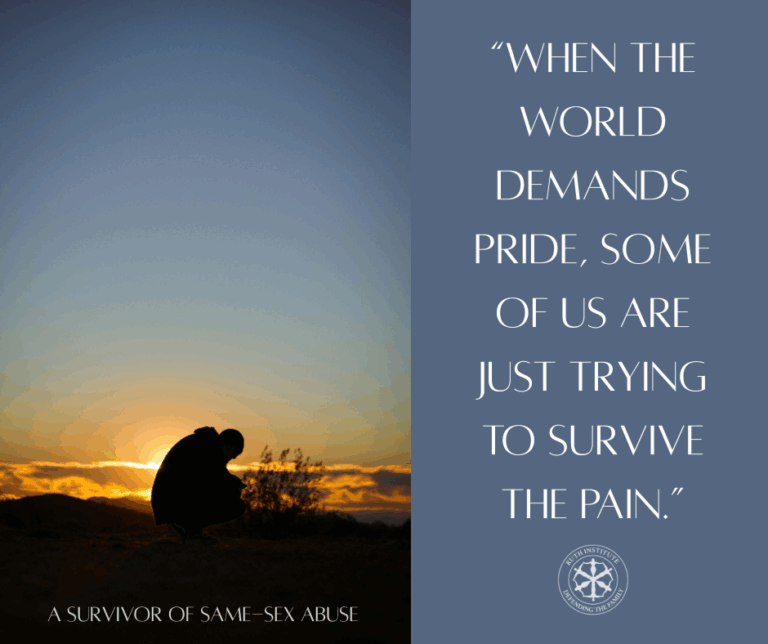by Jennifer Roback Morse
This article was first published April 17, 2017, at Crisis Magazine.
My son and I saw the new Beauty and the Beast. It was lovely, magical,
following the 1991 cartoon, almost scene for scene, song for song. This is the story everyone wants to hear: darkness and evil and selfishness transformed
by love into light and good and self-surrender. Life and love conquer death and fear.
This just happens to be the Christian story. That is why we never tire of hearing it. We were meant for love, for communion with others, for radical self-giving.
We want the Beast to be transformed. We want Belle to see beyond his looks and love him. We love Belle’s father and mother when each of them sacrifices
themselves for their daughter. (Spoiler alert: we find out what happened to Belle’s mother.) We do not need to be talked into loving these moments.
We love them instinctively, from the deepest part of our hearts.
We love the authentic portrayal of masculinity and femininity. The villain, Gaston, is a caricature of manhood. He is a preening, self-indulgent bully.
He uses his strength and power to lord it over everyone around him and get what he wants. We are meant to despise the trio of girls who fawn over Gaston.
And we do, because they are caricatures of authentic womanhood. They are absorbed with their looks and in snagging a high-status man.
We love Belle, not because she is an embodiment of some new feminist protagonist, but for the same reasons we have always loved our heroines. She is kind,
faithful, and capable of radically self-giving love. Yes, she speaks her mind. Yes, she is competent. Yes, she likes to read. But who ever thought
these traits were incompatible with genuine femininity? Shakespeare? Tolstoy? Laura Ingalls Wilder? Only feminist ideologues in their fantasy worlds
ever thought otherwise.
We love the Beast because he is transformed from being a punk like Gaston into a truly manly man. His willingness to sacrifice his life for the sake of
Belle’s happiness transforms him. This just happens to be what St. Paul enjoins of husbands in Ephesians 5: “Husbands, love your wives, just as Christ
loved the Church, and gave himself up for her.”
We do not need to be taught to love this story. It is written on our hearts by our Creator. In spite of the ravages of sin, in spite of all the ways we
Moderns have distorted ourselves, we still respond to the story of self-giving love triumphing over selfishness. Ideologically-concocted fantasies
don’t satisfy.
The Gay Moments
This brings me to the Beauty and the Beast “gay moment” that got so much press prior to the film’s opening. The film has several gay innuendos.
A viewer in the theater could blink and miss them. That is why I believe Christians can see it, and even take their kids. The gay double entendres
will sail right over their heads.
Buying the DVD is a different story. If kids watch the film repeatedly as people tend to do in their own homes, they will eventually figure out the
gay stuff.
Interestingly enough, the presumably-gay LeFou doesn’t actually fit the Official Gay Storyline. He is unsure of his masculinity. By attaching himself
to the hyper-masculine Gaston, he tries to reinforce his own sense of maleness.
But contra the Official Gay Storyline, his attraction to Gaston does nothing positive for him. In fact, it weakens him. He lies for Gaston. He acquiesces
in attempted murder. He participates in mob violence. All along, LeFou knows he is doing wrong. He stifles his conscience to please Gaston. When
Gaston finally throws him under the bus (actually, under the piano), LeFou has second thoughts. He mentally ditches Gaston, and he can finally
fight for what he knows to be right.
In other words, he becomes a man. He doesn’t need Gaston. At the end of the film, he is dancing with women, along with every other man in the castle.
Is it really a “gay moment” in the last scene when he momentarily gets partnered with a man? Or is it reversion to heterosexuality when LeFou dances
happily with women in the bulk of the scene? More importantly, what is the Moment with a Man even doing in the movie? It adds nothing to the plot.
I think director Bill Condon felt he needed to pay obeisance to the Big Gay Activist Machine. The hints about the “exclusively gay moment,” to “the UK’s best-selling gay magazine” are part of the
dance everyone now needs to perform to please the really powerful people.
But was it enough? Of course not. Nothing is ever enough for the True Believer.
Polygon panned it. USA Today called it “queerbaiting”: promising just enough to get gays into the theaters, but not nearly enough.
Why isn’t it enough?
Soviet Art
The sexual revolutionaries are peddling propaganda. They must. They are trying to manipulate people into believing things that are not true.
Love and sex are not the same. We cannot live without love, but we can live without sex. Men and women are different. Selfishness does not make
us happy. These things are all true. The sexual revolutionaries are trying to create a society based on their opposites.
This project of theirs cannot succeed. But the impossibility of the goal does not dissuade them from their attempts. Their fantasy of what the
world should be continues to propel them. Every new failure just ratchets up their commitment to keep trying.
Hence the need for more and deeper propaganda. The sexual revolutionaries must do as the Soviets did: enlist artists to create propaganda for the
creation of their fantasy. Every work of art must point to the Glorious New World.
The Disney people painted a mustache on their Mona Lisa of a film, in order to placate the Activists, who, in the end, were not satisfied. Some
have said that the “gay LeFou” character is a tribute to Howard Ashman, who wrote the original lyrics but died of AIDs before the cartoon was released in 1991. I find that suggestion offensive. I doubt that an artist
of his stature would be “honored” by the Disney studios inserting the equivalent of a juvenile fart joke into his work. (Speaking of fart jokes,
this not-nearly-gay-enough criticism of the film is gross.
Is this how they really talk when they think no one is listening?) Soviet art is bad art. Pasting homosexual themes onto this story is bad
art.
I watched the original cartoon endlessly, when it came out in 1991 and I had two preschoolers. How will the “gay moments” in this new version hold
up after repeated viewing? All the rest of this live-action remake could be watched endlessly, without losing its charm. But the gratuitous
gay scenes will be boring the second time you see them.
As for the Christians who called for a boycott of the film without even seeing it, well, I think that was ill-conceived. It is possible that Director
Bill Condon, who is openly gay himself,
was attempting to bait Christians. But taking the bait is not always wise. It could be more akin to a child repeatedly dropping his spoon from
the high chair: he doesn’t really want the spoon. He just wants to see you pick it up over and over.
I think is more likely that Condon’s real audience for his comments was the Gay Commentariat. He felt he needed to pay homage to them, and win
their approval. We conservative Christians are barely on his radar screen. We cannot hurt him the way gays in Hollywood potentially could.
The differences between the new Beauty and the Beast and the original cartoon from 1991 shows how far our culture has fallen into the
grip of sexual revolutionary propaganda. We barely recognize it.
The telling of the Christian story resonates because it is calling out to our hearts with things everyone knows to be true. We Christians have
Truth and Beauty on our side. We need to use them, without apology.



